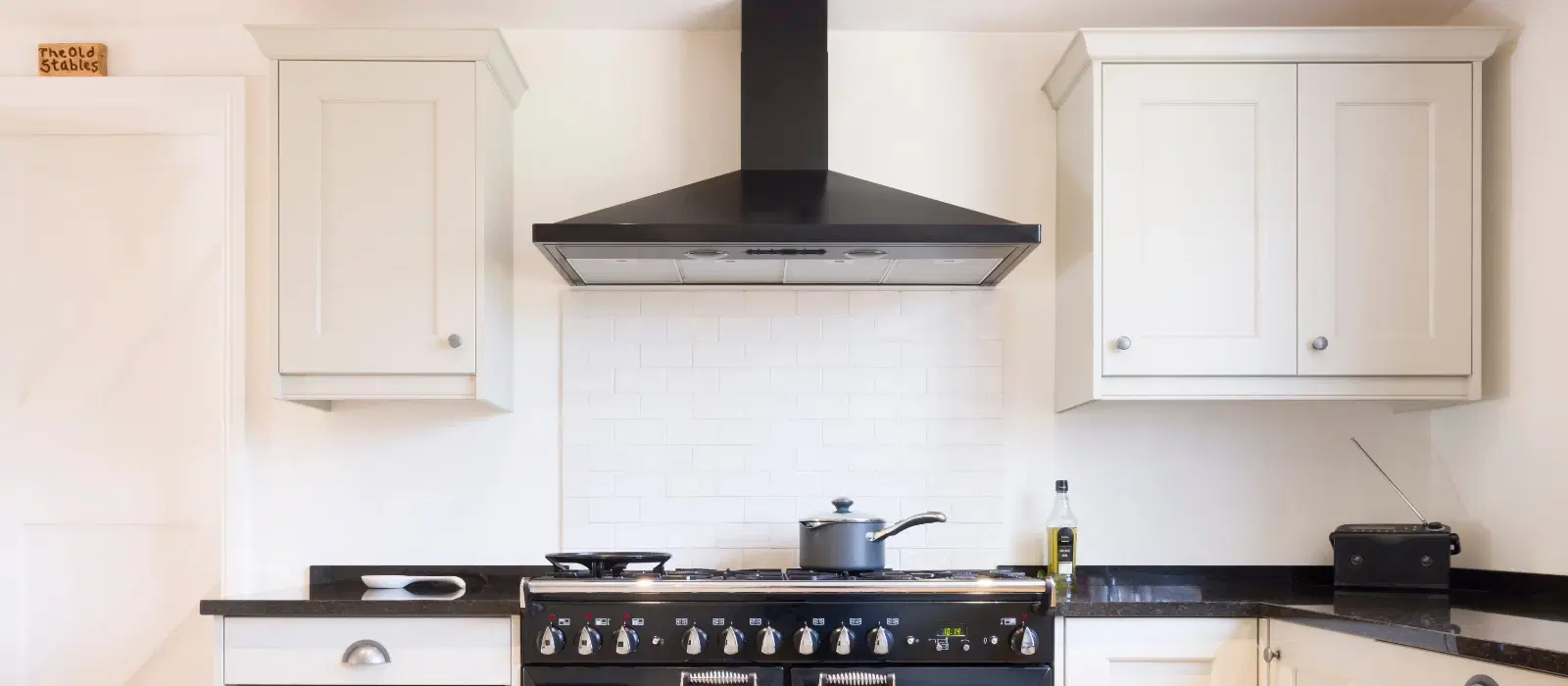
Home Appliances
•03 min read
(57)-da278510-86b7-4f3a-ba9b-af6824938f75.png&w=3840&q=75)
Imagine stepping into a kitchen free of smoke, grease, and lingering odors—where every meal is a joy and cleanliness reigns. This guide provides you with an essential checklist to ensure you make the most of your Kitchen Chimney. By reading on, you'll gain clear insights into how to enhance your cooking environment through optimal ventilation, smart installation tips, and regular maintenance practices, all of which contribute to a more efficient, healthier kitchen.
A well-ventilated kitchen not only makes cooking a more pleasant experience but also safeguards your health by reducing airborne pollutants. The use of a chimney in kitchen helps effectively clear smoke and fumes compared to traditional exhaust fans, ensuring that your living space remains safe. Good ventilation prevents the buildup of harmful particles, protecting surfaces and extending the life of your kitchen decor.
The benefits of a Kitchen Chimney extend far beyond just clearing smoke. A chimney efficiently absorbs grease, prevents stubborn buildup on walls, and enhances the overall air quality of your kitchen. Its powerful suction leaves your walls cleaner and minimises the need for frequent deep cleaning. This practical solution not only elevates your cooking space but also reduces post-cooking chores, making every experience more enjoyable.
The market offers a variety of designs to suit different kitchen configurations, ranging from wall-mounted models to island-mounted, built-in, and even corner chimneys. Modern kitchen chimney designs balance functionality with aesthetics. They integrate seamlessly with contemporary kitchen decor, giving your space a sleek and sophisticated look while performing exceptionally well.
Selecting the ideal chimney involves evaluating your kitchen space, cooking habits, and budget. If you have a modular kitchen, certain designs offer a perfect fit along with high performance. Considering the size of your kitchen is critical; a large space may require a more powerful chimney to achieve effective ventilation. This approach ensures that the use of chimney in kitchen delivers the optimum performance you expect.
(58)-b351916e-6f07-4ab5-ad4f-a27e0a33b76c.png&w=3840&q=75)
For your kitchen chimney to operate effectively, its installation is key. Positioning the chimney at the right height and close enough to your stove is crucial for efficient smoke and grease extraction. Moreover, the ventilation route should be clear and direct to avoid any backflow or leakage. Opting for professional installation not only ensures safety but also enhances the longevity and performance of your kitchen appliance.
Often, people make errors such as installing the chimney too high or too low, using improper ducting, and overlooking power requirements. These mistakes hinder the chimney's performance and can damage your appliance over time. A careful approach, including consulting installation experts, will help you avoid these common pitfalls. Following these chimney installation tips guarantees that your appliance performs optimally right from the start.
Pro Tip from Tata Neu: Regular cleaning and timely filter replacement can improve your chimney’s efficiency by up to 30%. Prioritise routine maintenance to keep your kitchen fresh and grease-free.
Maintaining cleanliness is vital for efficient operation. Start by gently removing and cleaning the filters to get rid of grease buildup. Follow this with a thorough wipe-down of ducts and external surfaces. Depending on usage, cleaning once every month ensures optimal performance. These easy steps will help you maintain peak efficiency and extend the life of your appliance.
Routine maintenance goes beyond cleaning. Regularly check the motor's functionality and inspect duct integrity to catch any potential issues early. Replace filters as per the manufacturer’s guidelines, and watch out for any warning signs like unusual noise or a decrease in suction power, which may indicate the need for repair or replacement. Adopting a diligent maintenance schedule enhances the reliability of your kitchen chimney and ensures perpetual cleanliness throughout your home.
(59)-2216843c-cd68-4958-8795-6832291d0b5f.png&w=3840&q=75)
When evaluating models, look for features that blend technology and ease-of-use. Auto-clean functionality, powerful suction, energy efficiency, and the right filter type are all key considerations. These best kitchen chimney features not only enhance performance but also simplify the overall maintenance process, making for a smooth and hassle-free cooking experience.
While exhaust fans are a cost-effective option, they rarely match the efficiency and benefits of a fully-functional kitchen chimney. With superior suction power and design innovations that focus on improved ventilation and reduced maintenance, chimneys offer a better long-term investment for a modern kitchen. The value of improved air quality and reduced cleaning times often outweighs the initial higher cost.
A chimney is crucial for maintaining a clean, safe, and well-ventilated kitchen by efficiently removing smoke, fumes, and grease.
Disadvantages include a higher initial installation cost, the need for regular maintenance, and reliance on electricity to operate.
People use chimneys to improve air quality, minimise grease accumulation, and create an overall more pleasant cooking environment.
The installation cost depends on the chimney type, complexity of installation, and additional ducting requirements, with pricing varying accordingly.
Using a kitchen chimney effectively involves understanding its benefits, selecting the right model, ensuring professional installation, and practising regular maintenance. By following this comprehensive checklist, you can enjoy a healthier and more efficient cooking space that enhances both performance and aesthetics. Discover the advantages of smart kitchen solutions and the added benefits like NeuCoin rewards available through Tata Neu, all designed to help you shop smarter and enjoy an upgraded lifestyle.